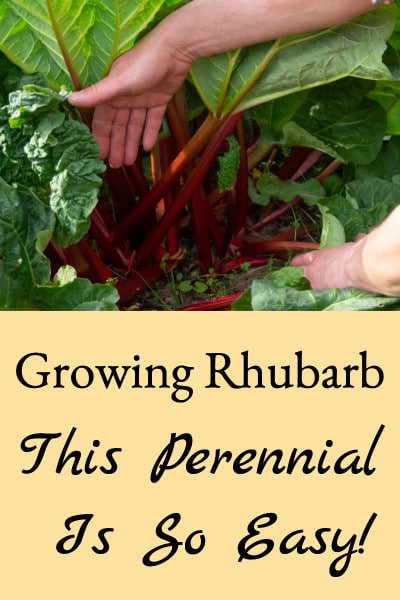
Rhubarb is super easy to grow, comes back every year, and makes fantastic pies, custards, and crisps! But, you actually grow it to eat the stalks – the flower heads need to be cut off.
Here’s all you need to know to grow your own tasty, perennial rhubarb:
How To Grow Rhubarb
Where Rhubarb’s Grown
Rhubarb can be grown just about anywhere, but prefers full sun and needs a well-drained location.
Several years ago I planted some in a protected nook, and it died. So next I put some in one of my sunniest locations, and it’s thriving.
I like to tuck in a plant in here and there in flower borders too; they provide some nice foliage contrast.
How to Start Growing Rhubarb
Rhubarb is grown from corms (root divisions), and in most regions, these should be planted in early spring. In mild growing regions, they can also be planted in the fall.
The corms should be planted about 3 or 4 inches deep with the buds a couple of inches below the soil surface. Many seed suppliers carry rhubarb or you can get some from a friend’s rhubarb patch.
First Year Rhubarb Plant Care
The first year after planting rhubarb, none of the stalks should be harvested. The plant(s) should be allowed to use all its energy to establish a strong root system. Removing stalks in the first year causes the plant to expend energy for leafy top growth instead.
Feed the plant(s) by top dressing with compost in fall and spring.
Ongoing Care For Growing Rhubarb
You can start harvesting rhubarb the second year after planting but be sure to cut off any flower stalks (see the photo below of a flower stalk) immediately. The plant will expend a considerable amount of its energy-producing flowers, but since we want the stalks, the flowers should be removed.
Continue top dressing with compost in spring and fall as rhubarb plants will continue producing for many years (perennial) once established.
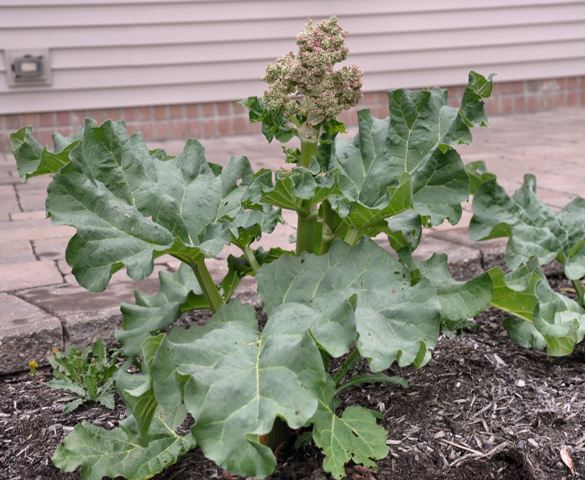
Flowering Rhubarb – Cut Off That Flower Stalk!
Harvesting Rhubarb
Harvest rhubarb by grasping a stalk and twisting sideways to remove the entire stalk. Don’t use a knife to cut rhubarb. That leaves a part of the stalk still attached to the crown and may encourage rot. Rot is one of the few serious diseases afflicting rhubarb.
You can harvest for about six weeks each spring, but no more than a third of the stalks should be harvested. Be sure to leave the plants with enough foliage to sustain themselves through the winter.
Rhubarb leaves should never be eaten; they are poisonous. Only the stalks should be eaten. After harvesting, besides cooking immediately, the stalks can be cut into pieces and frozen for use later in pies and crisps.
Try this easy recipe for a delicious rhubarb crisp: Best Easy Rhubarb Crisp
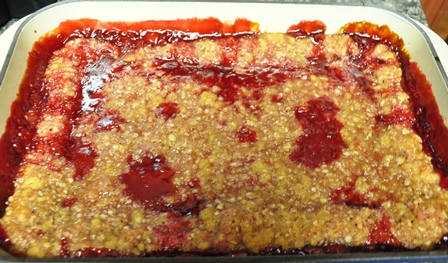
Rhubarb Crisp
Insects and Diseases
Other than rot, rhubarb is not much affected by disease and insects.
Rhubarb Varieties To Try
Canada Red, Valentine, and MacDonald are varieties known to be tender and sweet.
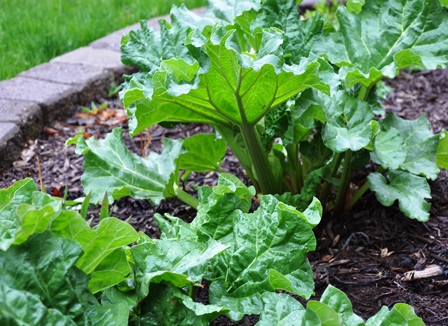
Spring Rhubarb!
So, rhubarb is a plant that comes back year after year, makes tasty pies and custards, isn’t affected by diseases or insects, and can be tucked into the landscape just about anywhere – seems like every homestead should be growing a few rhubarb plants!
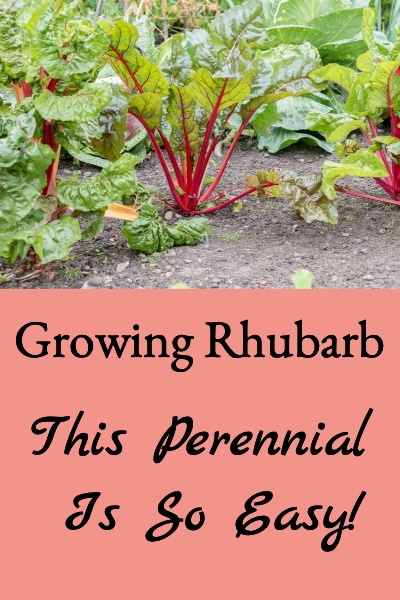
John Hayes says
can I grow Rhubarb in Zone9 Florida
Lesa says
Hi John,
My understanding is that rhubarb can be grown just about anywhere. However, it does like cold winters and the cool season, so I’m not sure how it will react in Florida. It’s so easy to grow though, give it a try and let us know.
Mike the Gardener says
My rhubarb popped up and is looking strong this year 🙂
Kathy says
Rhubarb is so easy to grow and great once you get it going – but I found that getting seedlings from my local nursery didnt work for me this year! Read more of my rhubarb adventures here: http://bit.ly/1FOE3bq
Gary says
What about transplanting? When should it be done? And could we half the plant and start a new one somewhere else? And then do we not harvest both halves for a year? Thanks!
Lesa says
Hi Gary, As it says in the post above, spring is the typical time for planting or transplanting rhubarb. And yes, you can split the plant in two and start a new one somewhere else. And I wouldn’t recommend harvesting until they become established as discussed above.